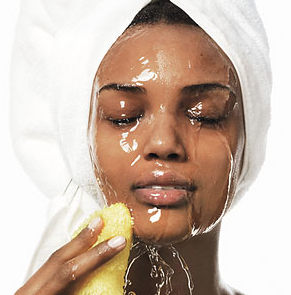As states reopen, many people will be required to continue wearing face masks, and facial skin irritation might become more prevalent.
“People are getting friction and irritation across their nasal bridge, behind their ears and perhaps under their chin,” said dermatologist Dawn Davis. “That happens because of natural wear, but also because the masks are tight, which is well intentioned, but can strangulate the skin.”
Masks should not be loose and should be worn firmly against the skin, she said, but not so tight they bruise the skin.
Davis also recommends using zinc oxide as a barrier to the friction without affecting or decreasing the effectiveness of the mask. “That’s the white hypoallergenic chemical that’s in unscented diaper paste. It has very nice anti-inflammatory properties, and you can put a thin layer across your nasal bridge, behind your ears or under your chin—in places where the mask will rub.”
The first step for mask use and sensitive skin: wash and pat your face dry and apply a hypoallergenic face moisturizer. Apply the lotion or cream twice, leaving a thick layer.
“Then do a vinegar soak with a washcloth and lay it across your face for about 15 minutes in the areas that are irritated,” Davis said. Her recipe for the vinegar soak: a teaspoon of white vinegar in a glass or small bowl of warm water, soak a clean washcloth, and then rest it on your face.
“Repeat that two to three times a day, if possible, and you’ll find that this humidifying method is very helpful,” she said.
Other skin irritation on the face and neck are likely to be exacerbated by the friction of the mask and sweating, since some people get warm wearing them. Examples include acne, rosacea and psoriasis.
For these concerns, Davis suggested:
- Wash the face gently with soap and water, twice daily.
- Use medications as directed.
- Consult your dermatologist or primary health care provider if a new rash erupts, or if the current skin condition changes appearance or is not responding to treatment.
Davis stressed washing cotton face masks to keep them clean. Hand washing is gentler on the mask, just remember to wash adequately with soap and hot water.
Davis offered these reminders, too:
- Replace ties or elastic, as needed.
- Replace the mask if it tears or develops holes.
- Wear the mask over the nose and mouth, not just the mouth.






